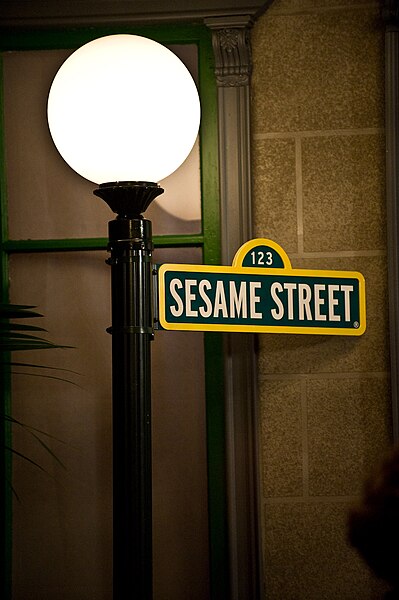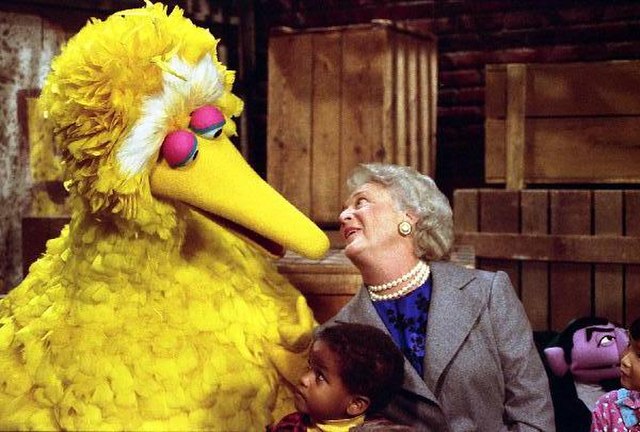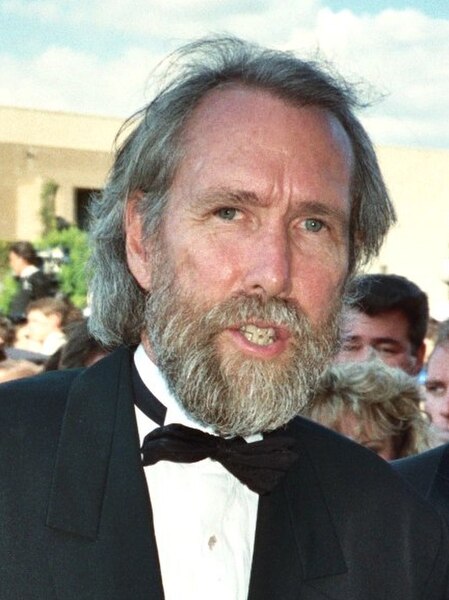Sesame Street is an American educational children's television series that combines live-action, sketch comedy, animation and puppetry. It is produced by Sesame Workshop and was created by Joan Ganz Cooney and Lloyd Morrisett. It is known for its images communicated through the use of Jim Henson's Muppets, and includes short films, with humor and cultural references. It premiered on November 10, 1969, to positive reviews, some controversy, and high viewership. It has aired on the United States national public television provider PBS since its debut, with its first run moving to premium channel HBO on January 16, 2016, then its sister streaming service Max in 2020.
Co-creator Joan Ganz Cooney. Pictured 1985
Lloyd Morrisett, co-creator. Pictured 2010
The Sesame Street signpost
First Lady Barbara Bush participates with Big Bird in an educational taping of Sesame Street at United Studios, 1989.
Sesame Workshop, Inc. (SW), originally known as the Children's Television Workshop, Inc. (CTW), is an American nonprofit organization that has been responsible for the production of several educational children's programs—including its first and best-known, Sesame Street—that have been televised internationally. Television producer Joan Ganz Cooney and foundation executive Lloyd Morrisett developed the idea to form an organization to produce Sesame Street, a television series which would help children, especially those from low-income families, prepare for school. They spent two years, from 1966 to 1968, researching, developing, and raising money for the new series. Cooney was named as the Workshop's first executive director, which was termed "one of the most important television developments of the decade."
CTW Co-founder Joan Ganz Cooney, in 1985
Co-founder Lloyd Morrisett, in 2010
Jim Henson, creator of the Muppets, in 1989
The South African co-production Takalani Sesame, with its unique set and some of the show's characters






